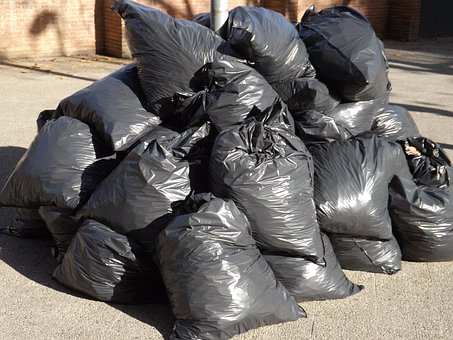Welcome to KDS Environmental
Reliability
100%
Affordability
100%
Professionalism
100%
Reputation
100%
 It is clear that the amount of home waste produced is increasing year after year at a worrying rate, and federal governments are under pressure to expand existing landfills or construct new ones to accommodate the waste that is being produced.
It is clear that the amount of home waste produced is increasing year after year at a worrying rate, and federal governments are under pressure to expand existing landfills or construct new ones to accommodate the waste that is being produced.
What is Hazardous Household Waste?
Household waste is leftover from home products. Dangerous home waste are home products which contain chemicals that have the potential to affect plants, the health of people and animals and are damaging to the environment when handled improperly
Incorrect management of home waste has the potential to be really damaging to the environment, people, and animals. What many of us may not understand is that many of those common home products contain corrosive, poisonous, or combustible chemicals that can be harmful to the environment if not dealt with or managed properly.
Dangerous home waste should not be gotten rid of in the same way as routine waste. For instance, gasoline can be buried in the ground, can affect rivers, and find its way into drinking water. The hydrocarbons in motor oils or pesticides have the potential to bio-accumulate in freshwater fishes and can find its way in the food chain. Burning contaminated materials leads to the release of poisonous chemicals and fumes in the air. Once released into the environment, these chemicals are dispersed over large areas, thus impacting the health of individuals over a larger area.
Some of these chemicals stay in the systems of plants and animals for a long time and may get in the food chain when the affected plants and animals are taken in.
 Bioaccumulation of harmful compounds in the systems of plants, animals, and people has the potential to affect their reproductive lives, development, hinder the function of numerous organs such as the liver and kidneys, affect the functioning of the central nervous systems and body immune systems of human and animals and some have been listed as known carcinogens.
Bioaccumulation of harmful compounds in the systems of plants, animals, and people has the potential to affect their reproductive lives, development, hinder the function of numerous organs such as the liver and kidneys, affect the functioning of the central nervous systems and body immune systems of human and animals and some have been listed as known carcinogens.
How Can You Tell a Product is Hazardous?
Read the labels of products. In Kicaster and other parts of the country, labels are required for all products. These should provide info on the constituents of the products, including signs and words, to show the hazard to animals, people, and the environment if mishandled.
How To Tell If Products Are Hazardous?
Always read the label of products in your home and make it a practice of reading the labels of a product before making the decision to purchase them.
What Can You Do to Manage Contaminated Materials?
Purchase Environmentally Friendly Products – Experts concur that the best way to control waste is to not produce it in the first place. You can start by avoiding the purchase of products that contain chemicals that are harmful to people, animals, and the environment. Purchase those products that are biodegradable or friendly to the environment.
Safe Product Storage – Ensure that harmful products are stored in a safe place, that their containers are not damaged, do not have any leakages to lower the danger of polluting water sources, land, people, animals, plants, and the environment. Ensure that corrosive products like acids are stored in different areas from other harmful products.
Check products frequently to ensure that there are no leakages and broken covers or bulging sides.
Always store products in their original containers to avoid unintended use.
Ensure that these products are stored in a place where children and animals have no access to them.
Disposal of Products – Disposal of products should constantly be the last resort. Why? Since there are no safe methods of getting rid of contaminated materials. You can avoid the dilemma of contaminated materials disposal by either selecting biodegradable products, recycling the product, giving the excess products to friends, neighbors, or family or buying smaller sized volumes of the product.
 If, however, disposal is inescapable, then you should get rid of the waste in the way prescribed on the label.
If, however, disposal is inescapable, then you should get rid of the waste in the way prescribed on the label.
Although there are laws to regulate the handling and use of large amounts of contaminated materials, the existence of laws to regulate the common small quantities generated at the home is non-existent. For this reason, the obligation for the management of contaminated materials falls squarely on the shoulders of the contaminated materials generators.
Protection of the environment can only occur when you play a role in finding creative ways to re-use, recycle, or lower waste. This is important if we are to protect the environment and health of future generations. Remember that Waste Management is Your Business, My Business, Our Business.
if you are in Kicaster or Lone Oak, Carpenter, Adkins, Grass Pond Colony, La Vernia, Sayers, Calaveras, Saint Hedwig, Saspamco, Elmendorf, call us now!
We are experts in environmental clean-up, and we can help you with eradicating dangerous items in your home. Our number one goal is to ensure that the environment is safe for everyone to live in, and your health is protected. Get in touch with us today and get a free, no-obligation quote.
We are the best eco-friendly company you can trust in Lone Oak, Carpenter, Adkins, Grass Pond Colony, La Vernia, Sayers, Calaveras, Saint Hedwig, Saspamco, Elmendorf and Kicaster.